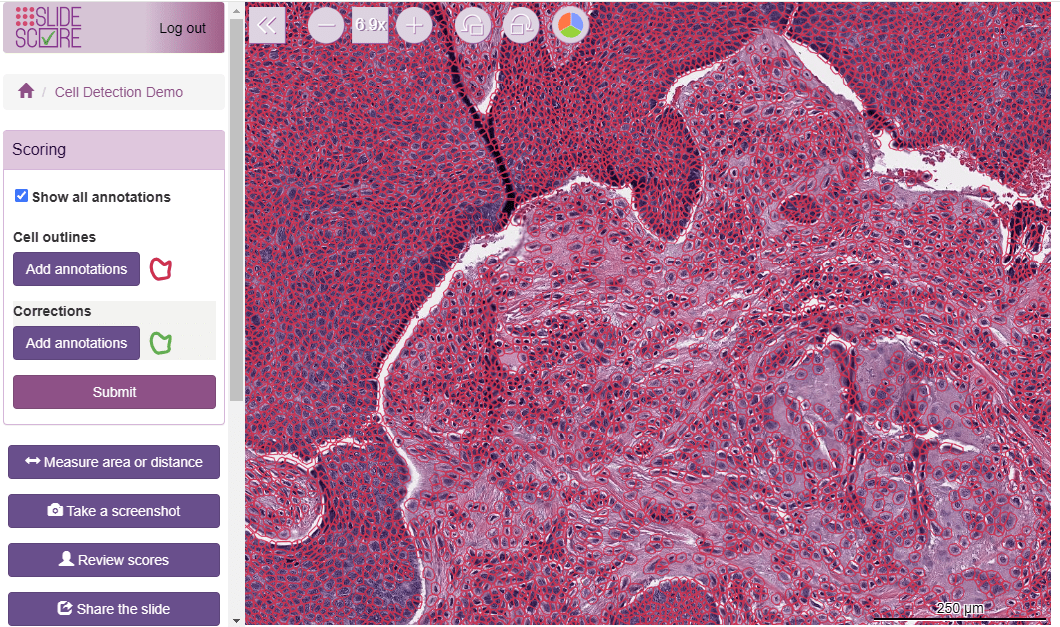What's new
Anno2: Introducing the Revolutionary Annotation Engine in Slide Score
In the fast-evolving world of digital pathology, precision and scalability are very important. Accurate and detailed annotations are needed to facilitate AI-based workflows, research, and education. However, traditional annotation tools often fall apart when faced with the sheer volume of data in whole slide images. Most diagnostic systems can handle around 10 thousand vortices, up to now Slide Score started to slow down around 100 thousand vortices. Image analysis models can easily produce a lot more than that. Whether it’s mapping the intricate borders of a tumor or analyzing the spatial relationships of cells within tissue, the need for a robust and high-performing annotation engine is clear.
We are committed to pushing the boundaries of what’s possible, and our latest innovation is a testament to this. Our new annotation engine, Anno2, is designed to handle polygons with hundreds of millions of vertices or detail the outline of each of the 5 million cells on a slide. We have designed a compression algorithm that can reduce the size of annotation file 50 times (compared to a GeoJSON file) or about 2 bytes per (x,y) point. Despite the high volume of data, our engine maintains performance and speed, ensuring that pathologists can work efficiently without experiencing lag or delays.
At Slide Score, we are dedicated to enhancing the capabilities of digital pathology through continuous innovation. There are more extensions to the annotation engine coming. Stay tuned for more updates and features as we continue to transform the landscape of digital pathology.
Try it out in our demo environment with 450 000 polygons that have about 20 vortices each (~9 million vortices total) visualizing outlines of all cells that QuPath detected in the image.
Do you want to learn more about the capabilities of the new system? Contact us!


